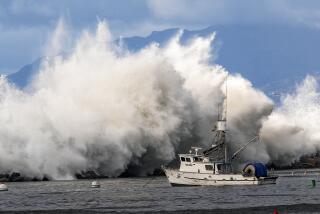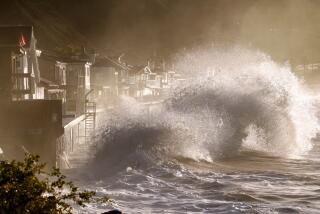Bye, El Nino . . . Hello, La Nina
A seemingly endless stream of ominous forecasts came months in advance of the 1997-98 El Nino event. Many scientists and some government officials were determined, and rightly so, to get the word out, even at the risk of great embarrassment and unnecessary expense if the warnings proved to be unfounded. Thatâs what the scientists had failed to do before the previous big El Nino, in 1982-83.
Consider it a lesson learned: The result was hardly the âEl No Showâ that some joked about after the predictions failed to materialize early. El Ninoâs droughts presented a mammoth tinder box that would turn slash-and-burn farming into disaster from Indonesia to Central and South America. More than 1 million acres burned in Australia. Torrential rains forced more than a quarter of a billion Africans from their homes and produced deadly outbreaks of malaria, cholera, dysentery and Rift Valley fever; more than 2,000 on the continent died from drowning or disease. Storms and outbreaks of cholera, malaria and dengue fever killed at least 500 from Mexico to Brazil. Drought in the South Pacific killed 545 and threatened thousands with famine. In all, 37 countries faced emergency food shortages.
But the damage and loss of life could have been much worse if the warnings had been ignored. The fact is that we now know more than ever about the climatic patterns that spur widespread but temporary changes. And there is much more to learn, including the possible relationship of El Nino to other jargon-laden mouthfuls, such as the âPacific decadal oscillation.â Thatâs a northern Pacific ocean event that is believed to have created the Dust Bowl in the Midwest in the 1930s.
Much of this information comes from interviews with scientists such as Kevin Trenberth of the National Center for Atmospheric Research in Colorado, Pablo Lagos of the Geophysical Institute of Peru, John M. Wallace of the University of Washington and Roger Lukas of the University of Hawaii. These men are pioneers of climatic science.
For the most part, projections were exceptionally accurate, but most governments were still not ready for what occurred. Notable exceptions could be found here in California, in Peru, where significant preparations were made for flooding, and in Australia, which anticipated drought-related fires.
Mexico was one of many countries that learned the hard way. It was unprepared first for a predicted onslaught of Pacific Ocean storms that killed at least 140 people and later for a drought that, combined with man-made fires, damaged more than 1 million acres. The Mexican fires stood on a par with the Indonesian blazes that released more carbon into the atmosphere than an average yearâs worth of industrial and automobile pollution in Europe.
Now, as El Nino gives way to its cold counterpart, La Nina, the goal is even better forecasting and quick and thorough government responses. Future warnings ought to produce fewer wisecracks and a lot more resolve.






